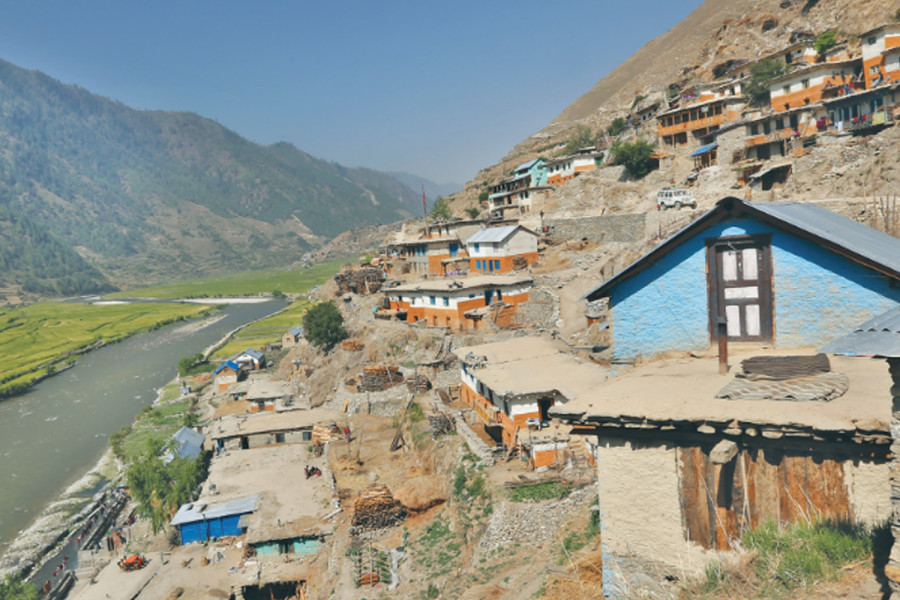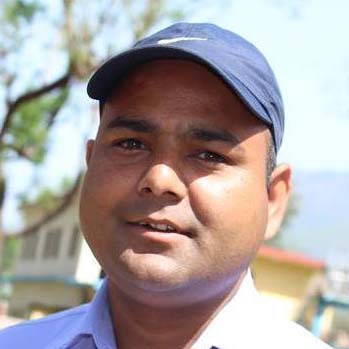National
Karnali folk return to oil lamps as electricity supply proves unreliable
Nine out of ten districts connected to the grid but residents face frequent power cuts.
Krishna Prasad Gautam
When Pahal Bahadur KC of Birendranagar municipality ward 6 in Surkhet saw a transmission line being built in his hometown a year and a half ago, his happiness knew no bounds.
People like KC soon started to throw away the solar panels that once lit their homes.
His joy, however, was short-lived.
"We are connected by the national grid. But it’s only in name. It’s useless," said KC.
A frantic KC says every hour, they see power cuts 5 to 6 times.
“Electrical appliances are being damaged by power fluctuations. It’s a big problem here."
Karnali, a far-flung province, struggles to turn on the lights.
Nine out of ten districts, except Humla, of the province are now connected to the national grid.
According to the Nepal Electricity Authority, the state-owned power utility, 125,000 households in Karnali get power through the national grid. However, people complain of irregular supply.
Padam Shahi, president of the Karnali Province Merchant Association, said the power problem has prevented investment in the region. "Investors are willing to come. They want to build big factories here, but the power problem is the roadblock."
He, too, spoke of multiple power cuts in a day. “Everyone is frustrated."
The power utility extended the national grid from Kalikot to Jumla's headquarters Khalanga a year and a half ago. However, locals are not happy.
“We have returned to kerosene lamps and solar power,” said Kamala Devkota of Khalanga. “We don’t rely on the electricity supply."
According to Devkota, even if they get electricity, the lights are dim.
The majority of households in Khalanga have reinstalled solar sets.
In areas like Tatopani and Tila, people use kerosene lamps.
"The electricity comes and goes," said Janak Neupane of Tatopani. "We trust kerosene lamps."
Most areas in Karnali were lit by micro hydropower plants before the national grid was built.
Now, energy produced by microhydros, too, is fed into the national grid.
Nearly 2,000 households have access to electricity in Jumla, said Naresh Dutta Rawal, chief of the Nepal Electricity Authority's Jumla distribution centre.
He said a 33kV transmission line runs from Surkhet to Kalikot, but in Jumla, there is an 11kV line. "With a recurring problem in the electric poles in the Kalikot-Jumla stretch, the power supply is irregular."
In Kalikot, too, people have the same problem.
"Supply is not regular," said Rajan Pandey, an entrepreneur in Manma, the district headquarters of Kalikot. "There were no difficulties when we had the micro hydropower plants. But after the construction of the national grid, we are not even able to recharge our mobile phones."
Basant BK of Salyan said people have switched back to solar panels.
"After the transmission lines were built, many people removed the costly solar panel," he said. "The hope of people to get electricity 24/7 has now turned into despair."
Shambhu Kushiyat, chief of the Nepal Electricity Authority's provincial office, said 95 percent of the area in the 86-km Banke-Kohalpur-Surkhet stretch falls under the forest, where the national grid is extended.
The long distance leads to low voltage and causes problems in the system, he said.
According to the authority's standards, a 33 kV transmission line should have at least a substation in a 60 km stretch. But in Karnali, the 300 km long transmission line has no substations, which has created the voltage problem, said Kushiyat.
Karnali province has the potential to produce 18,000 MW of electricity, but it currently generates only 10 MW.
Padam River in Dailekh generates 4.8 MW of electricity and Dwari River puts out 3.75 MW. The rest of the power comes from micro and small hydroelectricity projects.
According to the feasibility study, the Tila and Bheri rivers have the potential to produce 18,000 MW of electricity. According to statistics from the Nepal Electricity Authority’s Karnali provincial office, three dozen hydropower projects have applied for survey licences for a combined 4,541 MW.
Most mega projects planned in Karnali have been left in the lurch.
The Indian company GMR, which is responsible for building the 900 MW Upper Karnali Hydropower Project, has not been able to complete the project's financial closure.
Similarly, the reservoir type 410 MW Nalgadh hydropower project in Jajarkot has been stuck at the detailed project report. The work on the 655 MW Betan-Karnali project is also crawling.
Officials say that 64 micro hydropower projects built with an investment of Rs1 billion by various agencies in the past decade have been closed.
Without electricity accessible to all households, investors see no reason to come, said Dependra Rokaya, a former member of the Karnali Planning Commission. “If 3 to 4 mega power projects are completed, Karnali can be self-dependent by selling electricity,” he said.
Big factories were not established due to power shortages, he said. “As a result, there are no job opportunities here and youths are forced to go to the labour markets in India.”
According to the National Census-2021, there are 366,037 households in Karnali. Of them, only 49.63 percent (181,000) have access to electricity.
According to the census, 175,000 households have solar panels, while the rest use oil lamps for lighting.




 17.12°C Kathmandu
17.12°C Kathmandu















